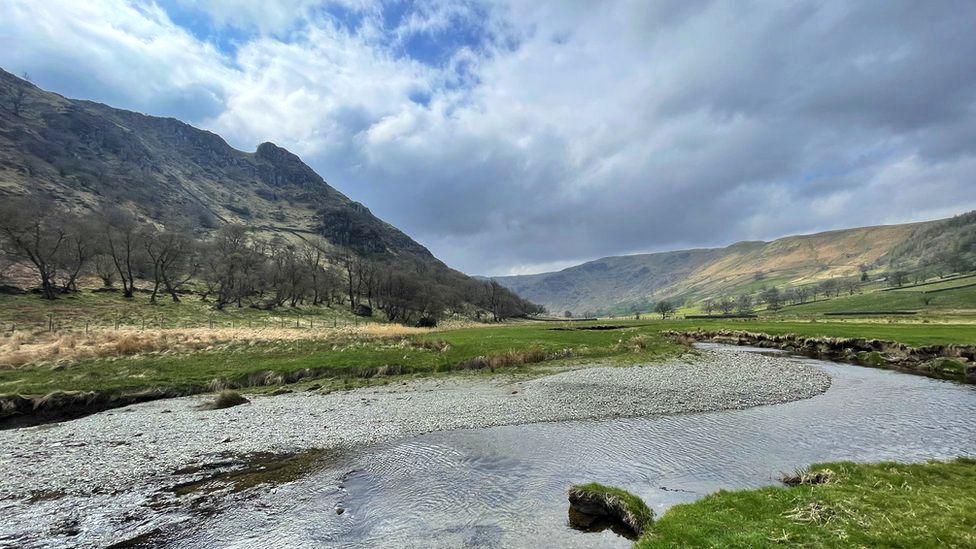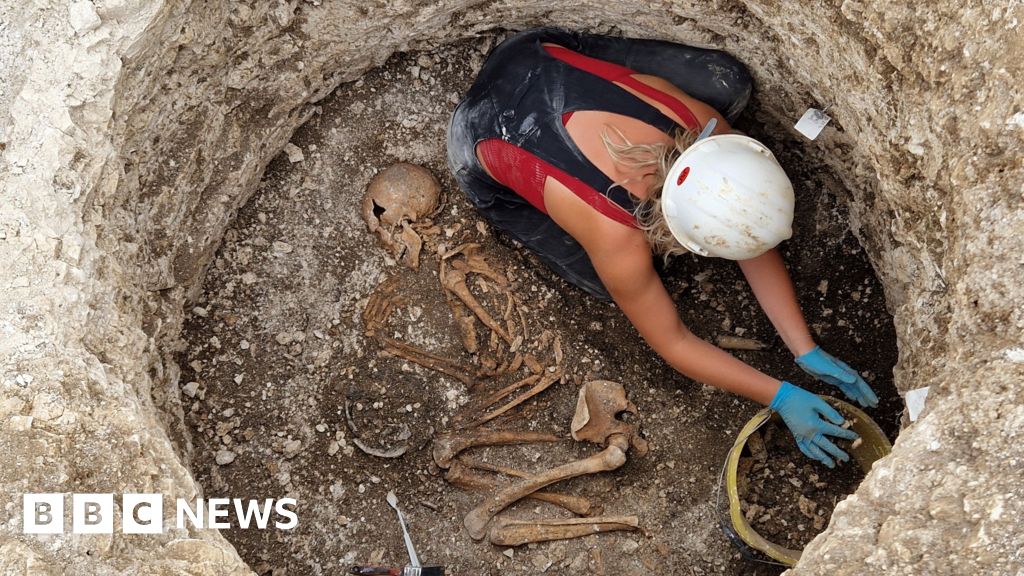ARTICLE AD BOX
 Image source, Victoria Gill
Image source, Victoria Gill
The meandering waters at Swindale Beck now provide important habitats that had been missing for centuries
By Victoria Gill and Sophie Woodcock
BBC News Climate and science team
"Nature needs chaos, it needs randomness," says Lee Schofield from the RSPB.
He is sitting on the bank of Swindale Beck, a stretch of river close to Haweswater Reservoir in Cumbria - one of England's largest lakes. The chaos - and the nature - has returned to this site after being missing for two centuries.
This is because, about 200 years ago, the community of Swindale embarked on an ambitious project to straighten this section of the beck, with the aim of speeding the flow of water through the valley and increasing the amount of farmland surrounding it.
That had unintended consequences. The faster-flowing water was too swift for fish like salmon and trout to spawn. And the river carried more sediment downstream, making it murkier.
So back in 2016, the RSPB and its partners - including the water company that owns the land - embarked on a remeandering or "rewiggling" project.
After studying the valley to locate the original path carved out by the river, the charity enlisted a team of diggers to recreate that curvy channel. It is now about 180m (200 yards) longer than the straight line that had been in the valley bottom for two centuries.
The transformation, says Lee, was almost immediate.
"About three months after the diggers left - we had salmon and trout spawning in the river again," he recalls.
The re-established, meandering curves have slowed down the flow of water, which creates aquatic habitat at each bend.
Fish, including minnows (pictured), salmon and trout now have vegetation for cover
"We now have vegetation in the river, where young fish can shelter," explained Lee. "There are gravel banks, deep pools and riffles - shallow, turbulent parts of the river where the water draws in oxygen. It all benefits the whole food chain.
"It's like a living thing moving through the valley now, while the old, straightened river was just like a sad canal."
This restoration was expensive. Funded in equal parts by the RSPB, the Environment Agency, Natural England and the water company landowner, United Utilities, it cost just over £200,000 to rewiggle the 1km (0.6 miles) stretch.
The government is currently funding a number of conservation schemes like this one under what is called the Landscape Recovery Scheme. Through this, farmers will be able to apply for money to boost biodiversity on their land, possibly by re-wiggling their own rivers or establishing more wild spaces like woodlands.
But Alice Groom, the RSPB's head of sustainable land use policy says more funding is needed if the decline of nature in this country is going to be tackled.
"Last year's Landscape Recovery pilot was massively oversubscribed," she says. "The Government should move swiftly to bring sufficient funding online to match the demand for those groups of farmers and landowners wishing to deliver for nature, climate and water quality."
Image source, David Morris
Image caption,The meadows in Swindale in full bloom
For United Utilities, re-wiggling essentially means the river cleans itself. Artificially straightened rivers flow faster and pick up more sediment. In this case, that is carried downstream to the Haweswater reservoir. Curves slow down the flow and allow the river to deposit its sediment on the banks.
That slowed flow also reduces the risk of flooding downstream.
Somewhat ironically, environmental damage that water companies do in the future could also provide a funding source for restoration projects like this.
Companies could soon face unlimited fines for dumping sewage, under recently announced government plans. Environment Secretary Thérèse Coffey has said that this money would be reinvested into a new water restoration fund and be used for community-led river conservation projects.
John Gorst from United Utilites, who worked on the Swindale project, told BBC News: "There are issues and we're addressing them.
"[But] this landscape is critical to us as a business. The reservoir is our single biggest supply, so we're investing in these catchments and managing them in a way that safeguards water quality and has all these additional benefits for biodiversity."
The RSPB says space can be made for nature and agriculture in Swindale
The RSPB runs its own farm in this valley and says it has shown that conservation and farming can work together and mutually benefit each other.
Lee Schofield says seeing the river's clear, meandering water - and its wildlife - return is inspiring.
"We as a species can rebuild and restore places like this. We can create space for nature," he says.

 1 year ago
48
1 year ago
48








 English (US) ·
English (US) ·